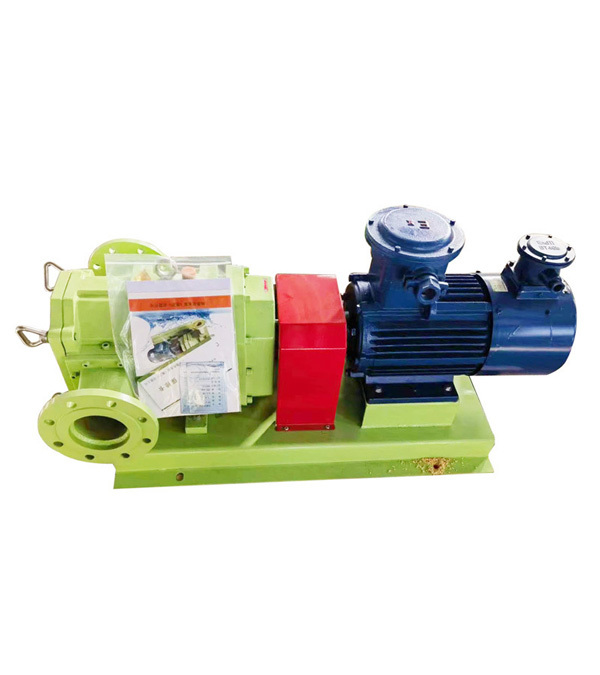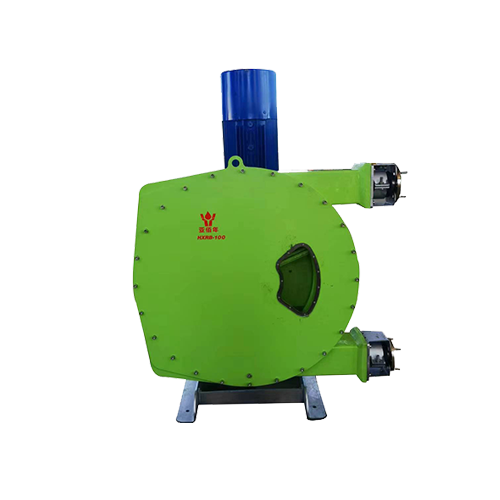Maximizing Efficiency: The Advantages of Rubber Lobe Pumps for Wastewater Management
Oct 13,2025

Maximizing Efficiency: The Advantages of Rubber Lobe Pumps for Wastewater Management
Table of Contents
- 1. Introduction to Rubber Lobe Pumps
- 2. How Rubber Lobe Pumps Work
- 3. Advantages of Rubber Lobe Pumps in Wastewater Treatment
- 3.1 Enhanced Efficiency and Performance
- 3.2 Low Maintenance Requirements
- 3.3 Versatility in Applications
- 3.4 Gentle Handling of Fluids
- 3.5 Cost-Effectiveness
- 4. Key Applications of Rubber Lobe Pumps
- 5. Comparison with Other Pump Types
- 6. Selecting the Right Rubber Lobe Pump
- 7. Future Trends in Pump Technology
- 8. Conclusion
- 9. FAQs
1. Introduction to Rubber Lobe Pumps
Rubber lobe pumps have gained significant traction in the field of wastewater treatment due to their efficiency and reliability. As industries seek to minimize operational costs while maximizing output, understanding the advantages of these pumps becomes crucial. This article explores how rubber lobe pumps can enhance wastewater management, leading to improved efficiency and effectiveness in treating waste.
2. How Rubber Lobe Pumps Work
Rubber lobe pumps operate using two or more lobes that rotate within a casing. As the lobes turn, they create a series of chambers that help move fluid through the pump. The design ensures smooth, pulsation-free flow, making them ideal for handling various types of wastewater. The use of rubber as a material for the lobes enhances the pump's flexibility and resilience, allowing it to handle abrasive substances without compromising performance.
3. Advantages of Rubber Lobe Pumps in Wastewater Treatment
3.1 Enhanced Efficiency and Performance
Rubber lobe pumps are renowned for their high efficiency in transporting wastewater. Their design minimizes energy consumption and maximizes flow rate, leading to lower operational costs. The ability to maintain a consistent flow rate means that systems can run smoothly, reducing the risk of backups and ensuring effective treatment.
3.2 Low Maintenance Requirements
One of the standout features of rubber lobe pumps is their low maintenance needs. The robust design and use of rubber materials mean that wear and tear are significantly reduced. This leads to longer intervals between maintenance cycles, which is crucial for wastewater treatment facilities operating on tight schedules and budgets.
3.3 Versatility in Applications
Rubber lobe pumps are incredibly versatile and can handle a wide range of fluids. From handling sludge to transporting chemicals, they can adapt to various applications within the wastewater treatment process. This adaptability makes them a preferred choice for many industries, allowing facilities to streamline operations and reduce the need for multiple pump types.
3.4 Gentle Handling of Fluids
The design of rubber lobe pumps allows for gentle handling of fluids, which is particularly important in wastewater applications. Unlike some other pump types that can shear or damage delicate materials, rubber lobe pumps maintain the integrity of the fluids being transported. This characteristic is especially valuable in applications where biological organisms or sensitive compounds are involved.
3.5 Cost-Effectiveness
Investing in rubber lobe pumps can lead to significant cost savings over time. Their energy-efficient design reduces electricity costs, while their durability lowers maintenance and replacement expenses. Moreover, the reduced downtime associated with these pumps translates into increased productivity and profitability for wastewater treatment facilities.
4. Key Applications of Rubber Lobe Pumps
Rubber lobe pumps find applications across various sectors within wastewater management. Some of the key areas include:
- **Industrial Wastewater Treatment**: Adapting to the challenges of chemical and biological waste.
- **Municipal Wastewater Treatment**: Efficiently transporting sewage and sludge.
- **Food and Beverage Industry**: Handling byproducts and waste with care.
- **Pharmaceutical Industry**: Ensuring compliance with strict hygiene standards while managing waste.
Each application showcases the pump’s ability to enhance operational efficiency and reliability.
5. Comparison with Other Pump Types
When comparing rubber lobe pumps to other pump types, such as centrifugal or diaphragm pumps, several advantages become evident.
- **Centrifugal Pumps**: While efficient for low-viscosity fluids, they struggle with thicker slurries and may require additional energy to operate.
- **Diaphragm Pumps**: While they excel in certain applications, they often require more maintenance and can be more expensive to operate.
Rubber lobe pumps offer a sweet spot in terms of efficiency, versatility, and maintenance requirements, making them an optimal choice for wastewater applications.
6. Selecting the Right Rubber Lobe Pump
When choosing a rubber lobe pump for wastewater treatment, consider the following factors:
- **Flow Rate and Pressure Requirements**: Assess the specific needs of your system.
- **Fluid Characteristics**: Understand the nature of the fluids being handled, including viscosity and temperature.
- **Size and Configuration**: Ensure the pump fits within your operational layout and complies with space constraints.
- **Material Compatibility**: Confirm that the materials used align with the types of fluids being pumped to avoid chemical reactions or degradation.
Taking these factors into account ensures that you select a pump that meets your operational goals.
7. Future Trends in Pump Technology
The pump industry continues to evolve, with emerging technologies enhancing performance and efficiency even further. Key trends include:
- **Smart Pump Technology**: Integration of IoT devices for real-time monitoring and data analysis, allowing for predictive maintenance and optimized performance.
- **Sustainable Practices**: Increased focus on environmentally friendly materials and energy-efficient designs.
- **Modular Designs**: Pumps that can be easily upgraded or modified to accommodate changing needs in wastewater treatment processes.
Staying abreast of these trends will help facilities optimize their operations further and maintain competitive advantages.
8. Conclusion
Rubber lobe pumps represent a transformative solution for wastewater treatment processes. Their unique advantages, including high efficiency, low maintenance, and versatility, make them ideally suited for various applications within the industry. By understanding how these pumps work and their benefits, wastewater treatment facilities can enhance their operations, reduce costs, and promote a more sustainable future.
9. FAQs
1. What are rubber lobe pumps used for?
Rubber lobe pumps are primarily used in wastewater treatment, where they efficiently transport a variety of fluids, including sludge and chemicals.
2. How do rubber lobe pumps differ from other pump types?
Unlike centrifugal pumps that rely on high-speed rotation, rubber lobe pumps create a gentle, pulsation-free flow, making them suitable for viscous fluids and delicate applications.
3. What maintenance is required for rubber lobe pumps?
Rubber lobe pumps require minimal maintenance compared to other pump types, focusing mainly on regular inspections and replacing worn components as needed.
4. Are rubber lobe pumps energy-efficient?
Yes, rubber lobe pumps are designed to minimize energy consumption while maintaining a high flow rate, making them cost-effective in the long run.
5. Can rubber lobe pumps handle abrasive materials?
Yes, the rubber material used for the lobes provides flexibility and resilience, allowing the pump to handle abrasive substances without significant wear.
PREVIOUS:
Contact Us
E-mail :
sales@yaquanpump.com
service@yaquanpump.com
Phone/WhatsApp:
+44 7301702546
+63 9452052801
Address:
Room B208, Building 2, North Hongqiao Songri Center, No.215 Gaochao Road, Jiading District, Shanghai









